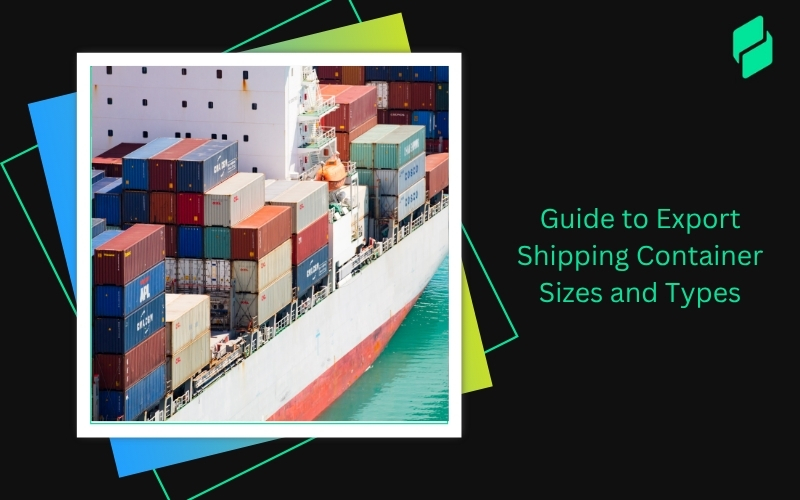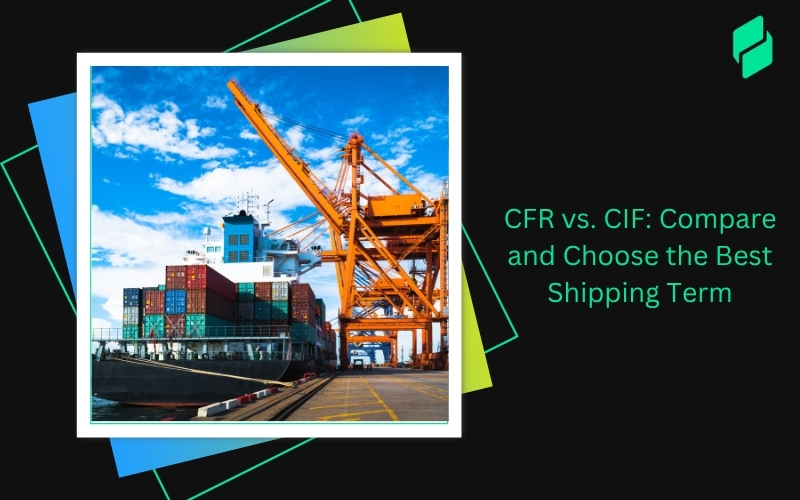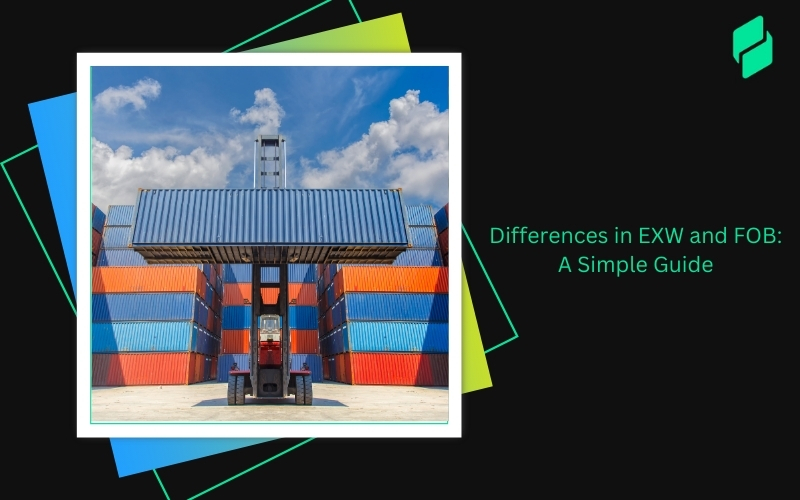Optimize your business: use unlimited savings with Pazago fulfilled now!
Get Started ->In international trade, selecting the right Incoterm is essential to define the responsibilities and risks between the buyer and seller.
Two commonly used terms are CIP (Carriage and Insurance Paid To) and CIF (Cost, Insurance, and Freight). While both involve the seller covering transport and insurance costs, there are key differences in how these terms apply to different transportation methods and risk transfer points.
Incoterms, developed by the International Chamber of Commerce (ICC) are used by businesses in over 140 countries.
Understanding the distinctions between CIP and CIF is crucial for businesses to make informed decisions that can affect costs, liabilities, and the efficiency of their supply chains.
In this blog, we will explore the key differences between CIP vs CIF and help you choose the right term for your needs.
What is CIP (Carriage and Insurance Paid To)?

CIP (Carriage and Insurance Paid To) is an Incoterm where the seller is responsible for covering the costs of transport and insurance for the goods up to the agreed destination, which can be any location in the destination country. The seller also handles export clearance.
However, once the goods are handed over to the first carrier, the risk is transferred to the buyer, who assumes responsibility for customs clearance, duties, taxes, and transport within the destination country. CIP applies to any mode of transport, including air, rail, and road.
Now that we've covered CIP, let's explore CIF (Cost, Insurance, and Freight), another important Incoterm in international shipping.
What is CIF (Cost, Insurance, and Freight)?

CIF (Cost, Insurance, and Freight) is an Incoterm used primarily for sea or inland waterway transport. In CIF, the seller is responsible for covering the cost of transporting goods and insurance until they reach the destination port. The seller also clears the goods for export.
However, once the goods are loaded onto the vessel, the risk of damage or loss is transferred to the buyer, who then assumes responsibility for handling customs clearance, duties, and inland transportation at the destination port.
Understanding CIF is important, but it’s also crucial to know how it differs from CIP. Let’s now look at the key differences between these two Incoterms.
Now that we’ve covered the insurance requirements, let's look at how to decide between CIF and CIP based on your specific shipping needs and circumstances.
Also read - Understanding Cargo Liability Insurance
How to Choose Between CIF and CIP?

Choosing between CIF (Cost, Insurance, and Freight) and CIP (Carriage and Insurance Paid To) largely depends on several factors, such as the mode of transport, destination of the goods, and the level of responsibility each party is willing to bear.
It’s important to assess the nature of the goods being shipped, the transport methods, and who should be responsible for handling the risks and insurance during transit. Here’s a guide to help you determine which Incoterm best suits your business needs.
- Consider the mode of transport: If shipping by sea or inland waterway, CIF may be the better option. For multi-modal shipments involving air, rail, or road, CIP is more appropriate.
- Destination matters: Use CIF if the agreed destination is a port; use CIP if the destination is an airport, city, or other inland location.
- Risk and responsibility: If the buyer prefers to handle insurance and risk from the destination port onwards, CIF is suitable. If the buyer wants the seller to manage risk and insurance up to the destination, CIP is more appropriate.
- Flexibility in shipping: CIP provides greater flexibility in terms of transport, so if your goods need to be transported across multiple modes of transport, CIP is often the preferred choice.
Now that we've outlined how to choose between CIF and CIP, let's explore how Pazago can simplify the decision-making process by offering tools that simplify Incoterm selection and ensure smooth international transactions.
You might also like - FOB vs CIF: What's The Difference? Which Is Better?
How Pazago Simplifies International Trade

Pazago’s platform is designed to optimize and simplify the complexities of international shipping, making it easier for exporters and importers to navigate the intricacies of Incoterms like CIF and CIP. With its integrated tools for real-time shipment tracking, document management, and logistics optimization, Pazago helps businesses choose the right Incoterm based on their unique needs.
Whether managing risk, handling insurance, or deciding on the most efficient mode of transport, Pazago’s comprehensive features ensure smooth international transactions, giving businesses full control over their shipments.
- Real-Time Shipment Tracking: Monitor shipments from origin to destination, ensuring you stay informed about your cargo’s status.
- Centralized Documentation: Manage all the necessary documentation, including Bill of Lading, packing lists, and commercial invoices, for both CIF and CIP, ensuring uninterrupted customs clearance.
- Flexible Logistics Management: Pazago optimizes shipping routes and adjusts for various transport methods, helping you choose the right Incoterm based on your shipment's destination and mode of transport.
- Insurance and Risk Management: With Pazago’s you can quickly assess the best insurance options based on your chosen Incoterm, ensuring that both sellers and buyers are fully covered throughout the shipping process.
- Fast, Secure Payments: Pazago simplifies payments, currency conversions, and financing, ensuring transparency and reducing risks. This helps make export transactions quicker and more secure, enhancing the overall shipping process.
To Sum Up!
Understanding the differences between CIF and CIP is essential for smooth international trade, but choosing the right Incoterm can be complex.
With Pazago’s all-in-one platform, you can confidently manage shipments, track real-time progress, and ensure that all necessary documentation is in place. Our solutions simplify the decision-making process, allowing you to focus on growing your business while we handle the logistics.
Ready to experience the difference? Get in touch with us today and discover how we can accelerate your shipping process, reduce risks, and improve operational efficiency.


.png)


.png)





